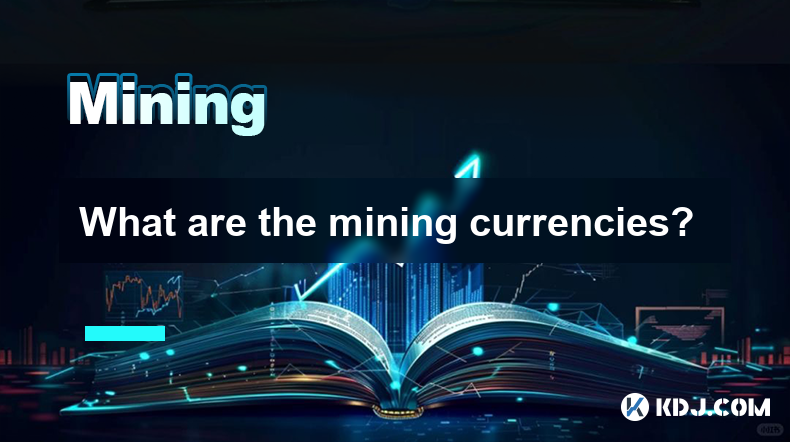-
 Bitcoin
Bitcoin $106,437.2012
0.82% -
 Ethereum
Ethereum $2,442.5287
0.82% -
 Tether USDt
Tether USDt $1.0005
-0.02% -
 XRP
XRP $2.1812
-0.27% -
 BNB
BNB $645.1327
0.45% -
 Solana
Solana $146.2379
0.39% -
 USDC
USDC $0.9999
-0.01% -
 TRON
TRON $0.2751
0.92% -
 Dogecoin
Dogecoin $0.1662
-0.23% -
 Cardano
Cardano $0.5827
-1.22% -
 Hyperliquid
Hyperliquid $37.5225
0.04% -
 Bitcoin Cash
Bitcoin Cash $479.0877
4.02% -
 Sui
Sui $2.7846
-3.27% -
 Chainlink
Chainlink $13.3576
0.84% -
 UNUS SED LEO
UNUS SED LEO $9.0252
-1.20% -
 Stellar
Stellar $0.2455
-1.07% -
 Avalanche
Avalanche $18.0680
-1.81% -
 Toncoin
Toncoin $2.8948
-1.07% -
 Shiba Inu
Shiba Inu $0.0...01164
-1.65% -
 Litecoin
Litecoin $85.0637
-0.06% -
 Hedera
Hedera $0.1526
-0.89% -
 Monero
Monero $316.2941
0.78% -
 Ethena USDe
Ethena USDe $1.0003
-0.04% -
 Polkadot
Polkadot $3.4113
-1.87% -
 Dai
Dai $1.0000
-0.01% -
 Bitget Token
Bitget Token $4.4488
5.16% -
 Uniswap
Uniswap $7.1740
3.09% -
 Pi
Pi $0.5968
11.43% -
 Pepe
Pepe $0.0...01010
-0.65% -
 Aave
Aave $264.3189
0.40%
What are the mining currencies?
Choosing the right mining currency is crucial, considering profitability, network security, halving schedule, and environmental impact to maximize earnings and mitigate risks.
Jan 11, 2025 at 04:00 am

Mining Currencies
Key Points
- Definition and types of mining currencies.
- Factors to consider when choosing a mining currency.
- Top 5 mining currencies and their key features.
- Profitability and risks associated with mining.
- Steps to start mining currencies.
- FAQs about mining currencies.
Introduction
Mining is the process of adding transaction records to a blockchain and securing it against malicious actors. Miners use specialized computer hardware to solve complex mathematical problems in order to validate and add new blocks to the blockchain. In return, miners receive a reward in the form of cryptocurrency.
Types of Mining Currencies
There are two main types of mining currencies:
- Proof-of-Work (PoW): Requires miners to solve complex computational puzzles to validate blocks.
- Proof-of-Stake (PoS): Validators are randomly selected based on the amount of cryptocurrency they hold (stake) to validate blocks.
Factors to Consider When Choosing a Mining Currency
- Profitability: Considers the current market value of the coin, its block reward, and mining difficulty.
- Network security: Ensure the chosen currency has a strong network and miners are well-incentivized to secure it.
- Halving schedule: This event reduces the block reward over time, affecting the profitability of mining.
- Environmental impact: PoW mining can consume significant energy, so consider the coin's energy consumption.
Top 5 Mining Currencies
1. Bitcoin (BTC)
- PoW algorithm: SHA-256
- Block reward: 6.25 BTC
- Halving schedule: Every 4 years
- Advantages: Strong network, high liquidity, established value
- Disadvantages: High energy consumption, low transaction speeds
2. Ethereum (ETH)
- PoW algorithm: Ethash
- Block reward: 2 ETH
- Halving schedule: None
- Advantages: Smart contract platform, decentralized applications
- Disadvantages: Congested network, high gas fees
3. Litecoin (LTC)
- PoW algorithm: Scrypt
- Block reward: 12.5 LTC
- Halving schedule: Every 4 years
- Advantages: Faster block time than BTC, more energy-efficient
- Disadvantages: Wider hash distribution may reduce profitability
4. Dogecoin (DOGE)
- PoW algorithm: Scrypt
- Block reward: 10,000 DOGE
- Halving schedule: None
- Advantages: Low transaction fees, fun and active community
- Disadvantages: Lower market capitalization, not widely accepted as payment
5. Monero (XMR)
- PoW algorithm: RandomX
- Block reward: 0.6 XMR
- Halving schedule: Every ~7 years
- Advantages: Focus on privacy, fungibility
- Disadvantages: Slower block times, less mainstream
Profitability and Risks of Mining
Mining profitability depends on several factors, including:
- Hardware efficiency
- Energy costs
- Cryptocurrency market prices
- Network difficulty
Risks of mining involve:
- Hardware failure: Mining hardware can malfunction or overheat, leading to lost revenue.
- Currency volatility: Cryptocurrency prices can fluctuate rapidly, making mining profits unpredictable.
- Network congestion: High network usage can slow down mining and reduce profitability.
Steps to Start Mining Currencies
- Choose a mining currency: Consider the factors discussed earlier.
- Acquire mining hardware: Select a miner (ASIC or GPU) based on the coin's algorithm and efficiency.
- Join a mining pool: This helps combine mining power and increase chances of finding blocks.
- Configure mining software: Install and set up mining software on your computer.
- Start mining: Once everything is set up, you can start the mining process.
FAQs about Mining Currencies
Q: What is the best mining currency to mine?
A: The best mining currency depends on individual factors, such as hardware capabilities, energy costs, and market conditions. It's important to research and compare different currencies before choosing one to mine.
Q: How much can I earn from mining?
A: Earnings from mining can vary depending on the currency, hardware, and electricity costs. It's important to calculate the profitability of mining before investing.
Q: How long does it take to mine a block?
A: Block times can vary significantly depending on the mining algorithm and difficulty of the network. For example, Bitcoin blocks are typically mined every 10 minutes, while Ethereum blocks are mined every 12 seconds.
Q: Can I mine cryptocurrency with a computer?
A: Yes, it is possible to mine cryptocurrency with a personal computer. However, it is more efficient to use specialized mining hardware, such as ASICs or GPUs.
Q: Is mining cryptocurrency legal?
A: Mining cryptocurrency is legal in most countries, but there may be regulations or restrictions in certain jurisdictions. It's important to check local laws before starting mining.
Disclaimer:info@kdj.com
The information provided is not trading advice. kdj.com does not assume any responsibility for any investments made based on the information provided in this article. Cryptocurrencies are highly volatile and it is highly recommended that you invest with caution after thorough research!
If you believe that the content used on this website infringes your copyright, please contact us immediately (info@kdj.com) and we will delete it promptly.
- DeFi Protocols Meet Tokenized Assets: RWA News and the Future of Finance
- 2025-06-25 21:05:12
- PEPE Price, Shiba Inu, and Angry Pepe Fork: Meme Coin Mania or Solid Investments?
- 2025-06-25 21:05:12
- South Korean Banks Eye Won-Pegged Stablecoin: A New Era for Digital Finance?
- 2025-06-25 20:45:13
- From Meme Dreams to Wealth Streams: Bonk Coin, Bitcoin Solaris, and the Future of Wealth Creation
- 2025-06-25 20:45:13
- Solana, Bitcoin, and the Crypto Crystal Ball: Price Predictions and Beyond
- 2025-06-25 21:25:12
- Pepe Coin, Crypto, and High Returns: Is Little Pepe the Next Big Thing?
- 2025-06-25 21:25:12
Related knowledge

What is liquidity mining in DeFi? How to participate and calculate the income?
Jun 20,2025 at 03:21pm
Understanding Liquidity Mining in DeFiLiquidity mining is a core concept in the decentralized finance (DeFi) ecosystem that allows users to earn rewards by providing liquidity to decentralized exchanges (DEXs) or lending platforms. In traditional finance, liquidity providers are usually institutional players, but DeFi democratizes this process, enabling...

What is the mining mechanism of digital currency? What hardware and cost investment are required?
Jun 23,2025 at 06:29am
Understanding the Mining Mechanism of Digital CurrencyThe mining mechanism of digital currency is a foundational process that ensures transaction validation and network security. In most Proof-of-Work (PoW) cryptocurrencies like Bitcoin, miners compete to solve complex mathematical puzzles using computational power. The first miner to find a valid solut...

Analysis of hybrid mining protocol: PoW+PoS hybrid profit calculation
Jun 23,2025 at 10:15am
Understanding Hybrid Mining ProtocolsIn the realm of blockchain technology, consensus mechanisms are pivotal in maintaining network integrity and transaction validation. A hybrid mining protocol combines two or more consensus algorithms to achieve a balance between security, decentralization, and energy efficiency. The most commonly adopted hybrid model...

How to operate option mining? Hedging strategy and profit structure
Jun 21,2025 at 03:29pm
What is Option Mining?Option mining refers to a decentralized finance (DeFi) strategy where participants provide liquidity or take specific derivative positions in options protocols to earn rewards. Unlike traditional yield farming, option mining often involves liquidity provision for options markets, allowing users to generate returns through premiums ...

What are the advantages of Layer2 mining? Gas saving and project inventory
Jun 20,2025 at 04:50am
Understanding Layer2 Mining and Its SignificanceLayer2 mining refers to the process of participating in decentralized applications or protocols that operate on top of a primary blockchain (such as Ethereum) using scaling solutions like Optimism, Arbitrum, or zkSync. Unlike traditional mining on Layer1 blockchains, which often involves high computational...

Is contract mining safe? Key points of smart auditing and vulnerability prevention
Jun 19,2025 at 08:08pm
Understanding Contract Mining in the Cryptocurrency SpaceContract mining refers to a method within blockchain ecosystems where users can participate in mining operations through smart contracts. Unlike traditional mining, which requires physical hardware and technical expertise, contract mining allows participants to invest funds into a mining pool or p...

What is liquidity mining in DeFi? How to participate and calculate the income?
Jun 20,2025 at 03:21pm
Understanding Liquidity Mining in DeFiLiquidity mining is a core concept in the decentralized finance (DeFi) ecosystem that allows users to earn rewards by providing liquidity to decentralized exchanges (DEXs) or lending platforms. In traditional finance, liquidity providers are usually institutional players, but DeFi democratizes this process, enabling...

What is the mining mechanism of digital currency? What hardware and cost investment are required?
Jun 23,2025 at 06:29am
Understanding the Mining Mechanism of Digital CurrencyThe mining mechanism of digital currency is a foundational process that ensures transaction validation and network security. In most Proof-of-Work (PoW) cryptocurrencies like Bitcoin, miners compete to solve complex mathematical puzzles using computational power. The first miner to find a valid solut...

Analysis of hybrid mining protocol: PoW+PoS hybrid profit calculation
Jun 23,2025 at 10:15am
Understanding Hybrid Mining ProtocolsIn the realm of blockchain technology, consensus mechanisms are pivotal in maintaining network integrity and transaction validation. A hybrid mining protocol combines two or more consensus algorithms to achieve a balance between security, decentralization, and energy efficiency. The most commonly adopted hybrid model...

How to operate option mining? Hedging strategy and profit structure
Jun 21,2025 at 03:29pm
What is Option Mining?Option mining refers to a decentralized finance (DeFi) strategy where participants provide liquidity or take specific derivative positions in options protocols to earn rewards. Unlike traditional yield farming, option mining often involves liquidity provision for options markets, allowing users to generate returns through premiums ...

What are the advantages of Layer2 mining? Gas saving and project inventory
Jun 20,2025 at 04:50am
Understanding Layer2 Mining and Its SignificanceLayer2 mining refers to the process of participating in decentralized applications or protocols that operate on top of a primary blockchain (such as Ethereum) using scaling solutions like Optimism, Arbitrum, or zkSync. Unlike traditional mining on Layer1 blockchains, which often involves high computational...

Is contract mining safe? Key points of smart auditing and vulnerability prevention
Jun 19,2025 at 08:08pm
Understanding Contract Mining in the Cryptocurrency SpaceContract mining refers to a method within blockchain ecosystems where users can participate in mining operations through smart contracts. Unlike traditional mining, which requires physical hardware and technical expertise, contract mining allows participants to invest funds into a mining pool or p...
See all articles
























































































